Featured Image Credit: Caspar Stanley
Based on a video by Tim Dodd, the Everyday Astronaut
Introduction
It’s fairly common that Tim gets asked interesting and thought-provoking questions, that often begin with the words “Why don’t they just…” – and are then followed with a concept that seems like a great idea. One example might be “Why don’t they just launch rockets from the top of a mountain? It would be closer to space in altitude, so less distance to travel, and there would be less air resistance due to lower pressure at that altitude!”
This sounds very reasonable at first glance. Let’s think about how much fuel is spent getting a rocket from sea level up to four km (~13,000 feet) in altitude, with the majority (or all) of the propellant consumed by the first stage of the rocket. How much smaller and more efficient might the rocket be if, instead of taking off at sea level, it took off above most of the atmosphere?

Another fantastic question that often crops up is “Why don’t they just launch rockets from the equator, so that the rocket gets to take full advantage of Earth’s rotation, to help it get to orbit?”
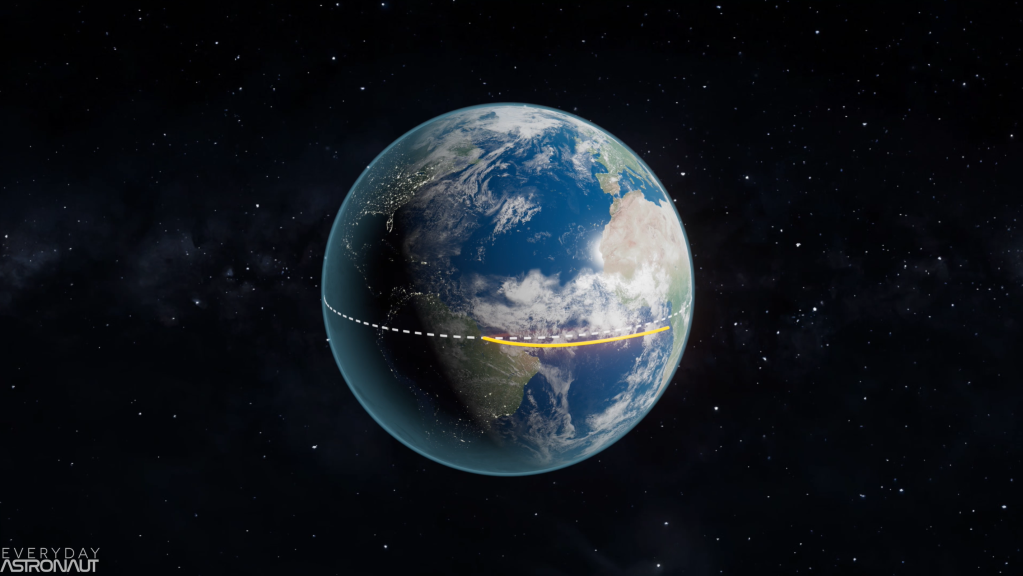
Let us consider that question. Why are we not taking full advantage of the planet that we’re living on? It is offering us free energy, isn’t it? How much difference in performance is there in launching a rocket from different locations?
In this article
In this video and article, we will look at the physics of launching rockets from different locations on Earth. We will review the issues involved in launching from the tops of mountains, or from being close to the equator, and we will attempt to work out why we don’t tend to see this happening very often, if at all.
Before we dive in, however, we should recommend that you have already seen Everyday Astronaut’s video and article “The Difference Between Space And Orbit”, as these discuss where “space” starts, the Kármán line, apogee and perigee, and a few other terms that we might find helpful to understand.
Having said all of that, this is the first video and article in a short series of two. In the next video and article, we will discuss some other questions such as “why not use other technologies, such as jet engines, to help make rocket launch systems more efficient?”, or how about launching from aircraft, or using magnetic levitation systems to help “throw” rockets like a catapult.
This article is also available in the form of a video on our YouTube channel Everyday Astronaut.
Launching From The Summit Of A Mountain
This question seems as though it should make sense, at first glance. Not only are you closer to space because you are higher up and therefore further away from the center of Earth’s gravity, but the atmosphere is less thick at altitude, so it would be possible to make use of a more vacuum-optimized nozzle, and have less air ahead of the rocket’s path to fight against.
If we could use a larger, and longer, nozzle on the engine(s) of the first stage, we would gain some efficiency from the engine(s), since it is the job of the nozzle to convert high pressure, hot exhaust into lower pressure, lower temperature gas that is moving at very high velocities. The larger the nozzle is, the more work it is able to do when converting the slow moving, high pressure gas into cooler, lower pressure, gas moving at high velocities. However, there is a limit as to how large we can make a nozzle that works even in thin atmosphere.
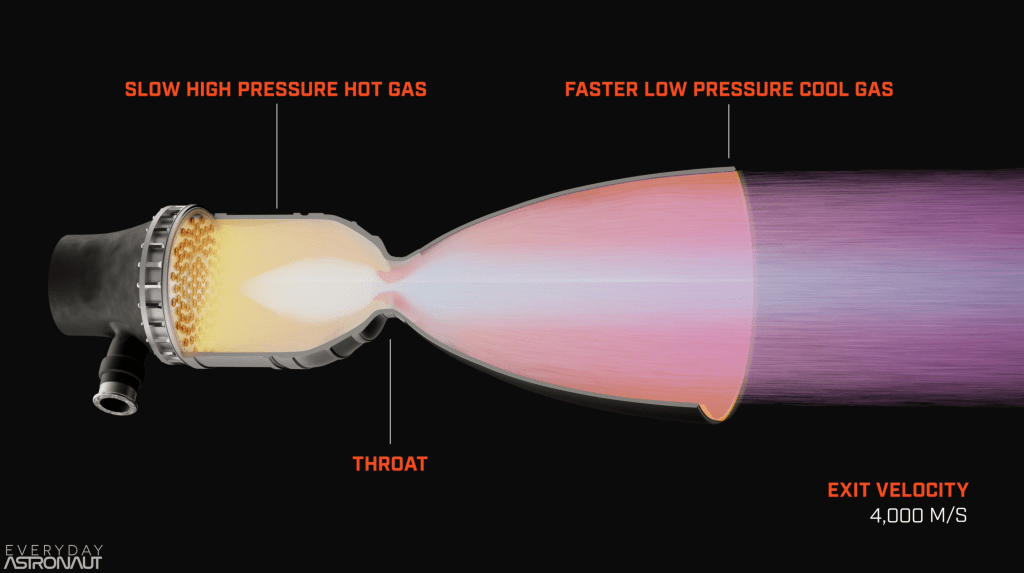
Nozzle Size
A larger nozzle can lower the pressure of the exhaust below the ambient air pressure, especially if it is at sea level where the ambient air pressure is highest. This can cause flow separation at the exit of the nozzle, and that could damage the engine.
It is really clear to be able to see the difference between a sea level engine and a vacuum engine by looking at the 3.7 m diameter on the Falcon 9 rocket. This is able to fit 9 sea level engines on the first stage, but only one vacuum engine on the upper stage. During stage separation, it is clear how wide that upper stage nozzle is. The videos show that it is almost as wide as the entire rocket.

(Credit: Chris Carlson / Associated Press)

As a general rule of thumb, it is not a good idea to have the pressure at the exit of your nozzle be lower than about 40% of the pressure of the air surrounding you. This means that at sea level, where the pressure is nominally 1 bar (by definition), the exhaust is rarely below 0.4 bar at the exit of the nozzle, so that we can avoid flow separation.

Scenario
Let us imagine for a moment that we do want to launch from the top of a mountain. To try to minimize the change for any existing launch provider, let us pretend that we are United Launch Alliance (ULA) from the United States, whose headquarters are in Colorado, not too far from Denver.
Since we now have the Rocky Mountains in our “back yard”, why should we not choose a new launch site for the Delta IV Medium, with no solid rocket boosters? (Yes, we do know that this rocket is retired from flight, but it is a useful example for us to use.)
In this scenario, we choose to place a new launch pad at the top of Pikes Peak, because it is close to the workforce, it has a paved road all the way to the top of the mountain, and is fairly high up with a summit at
4,302 m (14,114 feet). At this altitude, the atmosphere is already 40% less dense than it is at sea level.
Performance
This means that we could increase the size of our nozzle, which could in turn offer a few percent more efficiency on the rocket’s first stage. In this example, the new, slightly-enlarged nozzle would achieve 380 seconds of specific impulse at the launch site and 420 s in vacuum, compared with 360 and 412 seconds respectively, obtained by the standard RS-68A engine on the real Delta IV Medium.

This could have been a practical option on the Delta IV, since the first stage only has a single engine, i.e. no neighboring engines with which the nozzle might collide, so the nozzle could have been enlarged for these special mountain launch versions. So, the question is now, what does this actually translate into?
If the Delta IV Medium rocket were to launch from the Kennedy Space Center, it would be able to take around 8.5 tons to orbit. How does this stand up against our new launch site at Pikes Peak? The payload capacity would increase by about 1,000 kg, to 9.5 tons. This is a fairly healthy increase.
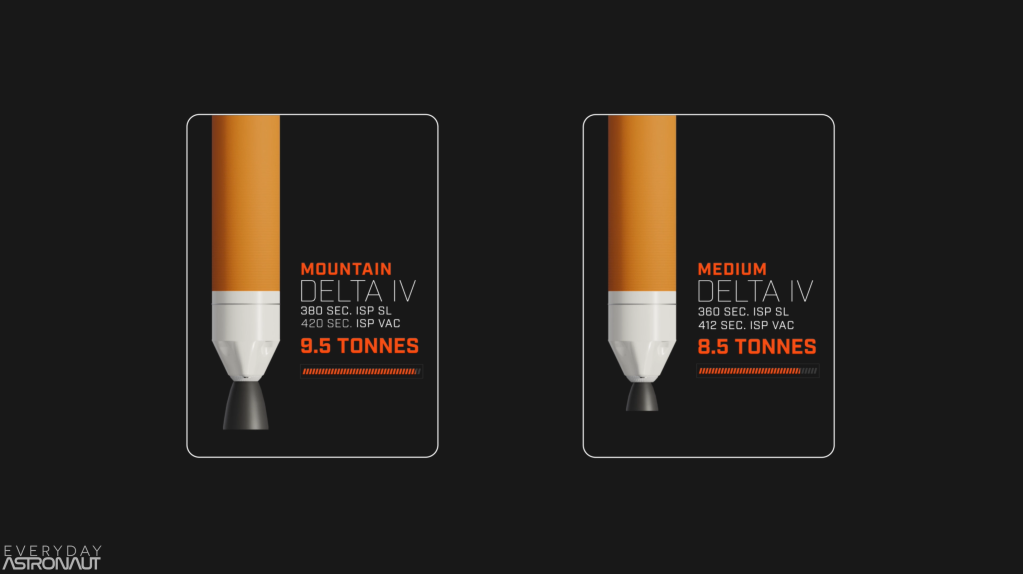
However, there is little advantage in launching from a higher altitude, in terms of being “closer to space”. The modest gain of 4 km compared with the 100s of km in altitude that the rocket will end up with, is not a lot in the grand scheme of things.
Velocities
Something else that does not make that much of a difference is the velocity gained from launching at a higher altitude, since the velocity at the ground is approximately the same regardless of your launch location.
If you watched the “orbit vs sub-orbit” video, or read the article, you may remember that, even if you start in space, you would still need a horizontal velocity of about 7,900 m/s in order to achieve a stable orbit and stay in space.
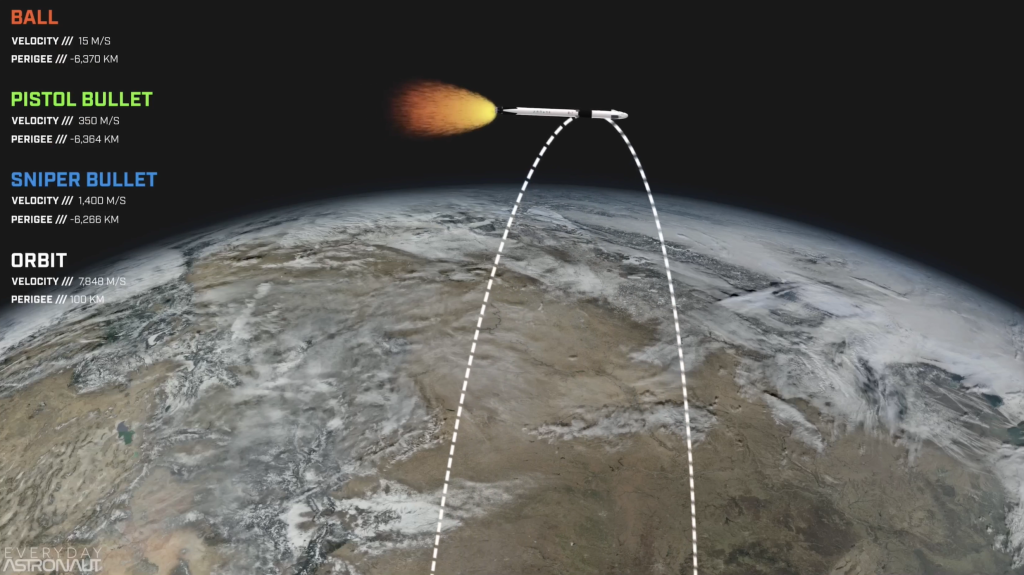
This means that we can observe the gains available by using a more efficient engine nozzle, which provides more delta V for the same amount of propellant, and the relative reduction in air resistance. However, we do not observe any significant advantage from increasing the altitude of the launch site, which turns out to be negligible in effect.
Regardless of what we have said so far, an increase in payload capacity of one tonne from a base payload of around ten tonnes seems fairly useful. So, what is the obstacle here? Why do we not see rockets launching from mountains such as Pikes Peak?
Flights Over Land
There are a few issues that we have not discussed yet. For example, perhaps the biggest obstacle to locating a launch pad inland, away from an ocean setting, is that now our rocket must overfly land, almost certainly nearing populated areas and personal property. In the United States, and many other nations, this is simply not acceptable. For the USA, the Federal Aviation Administration (FAA) does not appreciate a highly explosive rocket flying over populated areas – especially since, even in a nominal operation, a traditional rocket booster is jettisoned just a few minutes into flight and will come crashing down to ground level within a few hundred km from the launch site.

(Credit: SpaceX)
This would not be a huge problem for a launch that is directed out over the nearest ocean. For all such launches, warnings regarding restricted airspace and areas where marine vessels may safely operate are posted in advance, in order to keep everyone safe. This may affect flight plans for airlines, and may also affect operations of oil rigs, fishing boats, and leisure vessels such as yachts.

This would simply not be possible if launching inland within the United States, whether from the 48 continental states or Alaska and Hawaii. Unfortunately, for some people who live in villages in countries such as China, Russia, and Kazakhstan, there is a practical risk that they may end up living under the flight path of a giant metal tube that may come back to Earth and land on top of them following a rocket launch.

Transportation
Something else that we should consider is the logistics of transporting not just the rocket, but also all of its propellants, all the way up to the top of our mountain for each launch. This is not a trivial exercise. In our scenario for example, the road up to the summit of Pikes Peak is very winding, i.e. has a lot of twists and turns, and is also subject to poor weather conditions. This means that there is a strong chance that it would not be possible to get a large orbital rocket up to the summit to begin with.
In order to achieve this, for our scenario’s rocket of choice, we have to modify the roads along the route from the rocket factory all the way to the mountain summit, in order to accommodate the rocket, which in the case of the Delta IV Medium is 5 m wide. This is too large to travel on any road in the USA without the road being closed to let this happen. It would also require a specialized transport vehicle for oversized payload (long vehicle, heavy vehicle, etc.) Rental of such a transport vehicle, and funding for isolated road closures, may be very expensive.
This is the reason why the real-life Delta IV Medium has been transported from ULA’s factory in Decatur, Alabama all the way to either Florida or California, by ship. ULA has a marine vessel, called “RocketShip”, which takes the rocket down the Tennessee river, and the Mississippi river to the Gulf of Mexico, and then on to either launch site.
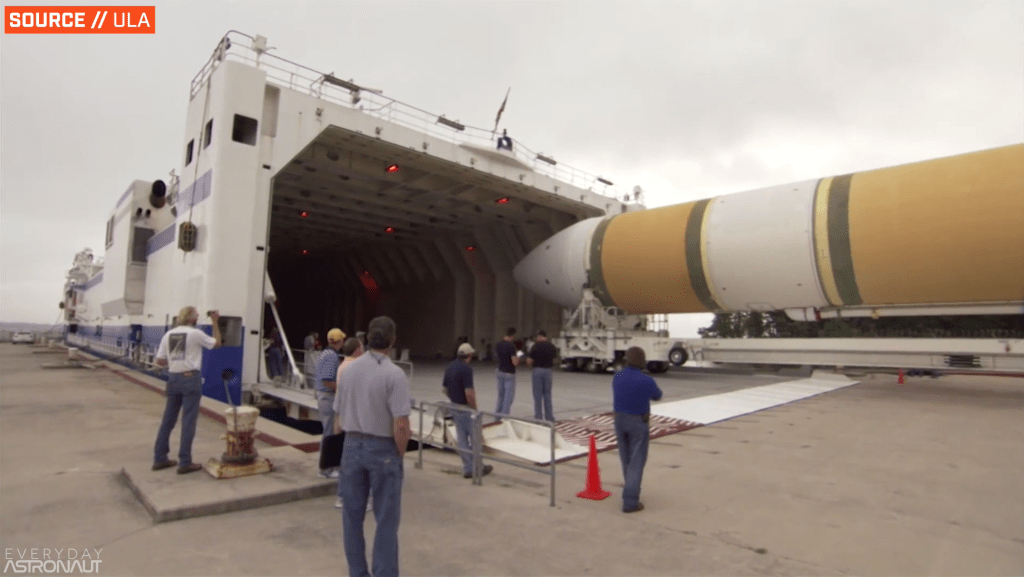
Designing For Transport By Road
It is this question of shipping and related logistics that has led SpaceX to design the Falcon 9 rocket to have the diameter that it has. The Falcon 9 is exactly 12 feet, 3.65 m, wide – which is the maximum width that is permitted for transport on US highways without incurring costs of declaring “oversize load” and all that such a declaration entails.

(Credit: Gary McKechnie Television)
So, SpaceX can transport Falcon 9 rockets from California to Texas for testing, and then on to either launch pads in Florida or back to California with minimal logistical issues. In some local jurisdictions, they may need help from wide load escorts, and help making tight turns at intersections, but these are much more limited in cost than transporting even wider or heavier loads long distance. In the wider load case, there would be many more permits and approvals required from each jurisdiction that is involved. Police escorts, utility approvals (for overhead power lines as an example) and other considerations would have to be dealt with.
In other words, unless our factory happens to be right next to the road up to the mountain launch pad, transporting a five meter wide rocket like a Delta IV by highway and then twisty winding road with switchbacks will not make financial sense.
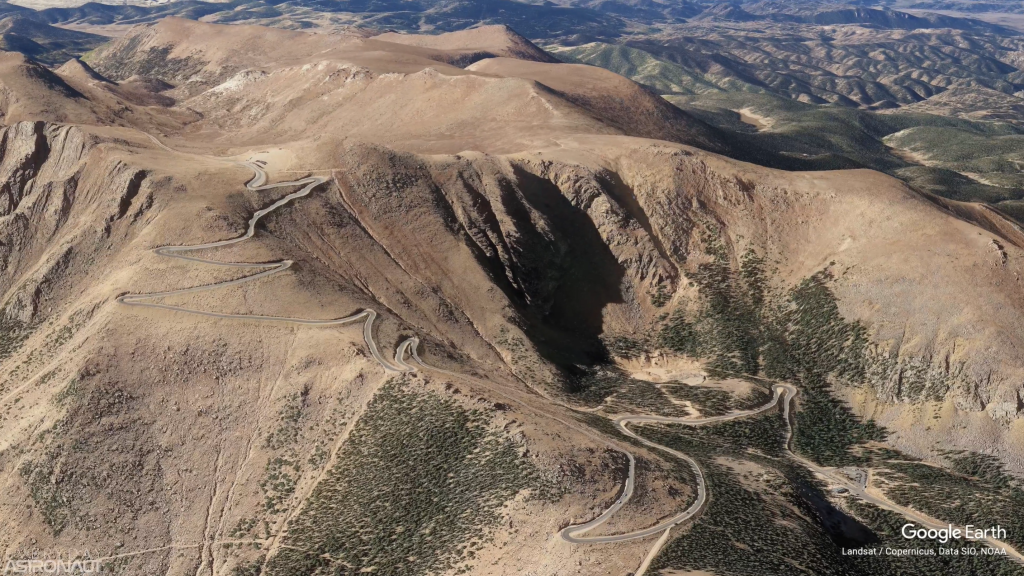
Logistics
There is another obstacle to consider. Launch pad crew and supplies also need to be ferried back and forth between the launch site and the nearest reasonable accommodation. There may not be a hotel with available rooms at acceptable costs to the launch provider at the top of our mountain. There may not be gas stations nearby in order to refill the vehicles involved in supporting the launch. In some cases, the mountain top may be in a “dry county”, and employees may balk at being asked to stay in such locations, and prefer to commute from a nearby county that is less restrictive.
If we ignore the operational costs described above, let us just think about the increased investment in the launch pad and related infrastructure, which might include tracking stations that are down range on the flight path, and upgrades to roads such as straightening tight bends and related matters which might include even fixing potholes. These costs might add up to hundreds of millions, or even billions, of dollars – all for just a 1,000 kg increase in payload capacity per launch.
Costs
In a case such as this, if there was a customer who had a payload whose mass was over 8.5 tons, the customer would most likely choose a different launch provider – or upgrade to a Delta IV Medium with two solid rocket boosters strapped onto the first stage at launch. While the Delta IV Medium was flying, yes, this was an option. Customers could choose from no boosters, 2 side boosters, or 4 side boosters. With a launch price of around $5M for no side boosters, or $10M for two side boosters, it was possible to increase the payload capacity to 12 tons – a full 3,500 kg increase.

So, for the very few occasions when, as launch provider, your extra 1 tonne capability might find you a new customer, it would not be financially sensible to spend all of the investment, take on the risk and increased cost of operations, to move to a mountain-top launch pad, when instead you can just simply attach two solid rocket motors to the side of your rocket, and meet the needs of your customer. The cost to the customer of the side boosters is going to be less than the cost of creating or updating a high-altitude launch site. This is likely to be true even if the cost of generating a mountain top launch site is spread across multiple launches and multiple customers.
Now let us consider something that may be surprising: in our scenario where we launch from Pikes Peak instead of Florida, we actually lose some performance due to the change of launch location. Why is this? It is not a question of altitude (how high up we are), but a question of latitude (how far North or South of the equator we are). This leads us to the next part of this video / article.
Launching From The Equator
Unless you subscribe to the “flat Earth” concept, then you probably already know that the Earth is spinning on its own axis, fairly rapidly. This is why we see the Sun rise and fall each day, and the stars at night time seem to move from East to West over our heads.
Due to the Earth’s rotation (which is approximately once per 24 hours, by definition), at the equator the velocity is around 480 m/s in space. This is a fairly large chunk of the total 7,800 m/s horizontal speed, needed to orbit the Earth. This is about 6% of orbital velocity.
Thanks to the relationship between total delta V and payload capacity, 460 m/s of otherwise free velocity should increase the payload capacity – by more than just 6%.
In fact, the European Space Agency (ESA) has been carrying out launches from French Guiana at around five degrees North. French Guiana is not a country in its own right; it is a territory within France. This allows rockets to take full advantage of the rotation of Earth, and look at the change in capacity of heat shielding amongst other topics.

We can make some comparisons between launches of the Soyuz 2.1 rocket which can be launched from either Baikonur in Kazakhstan or French Guiana in South America. Baikonur is located at around 45 degrees North.
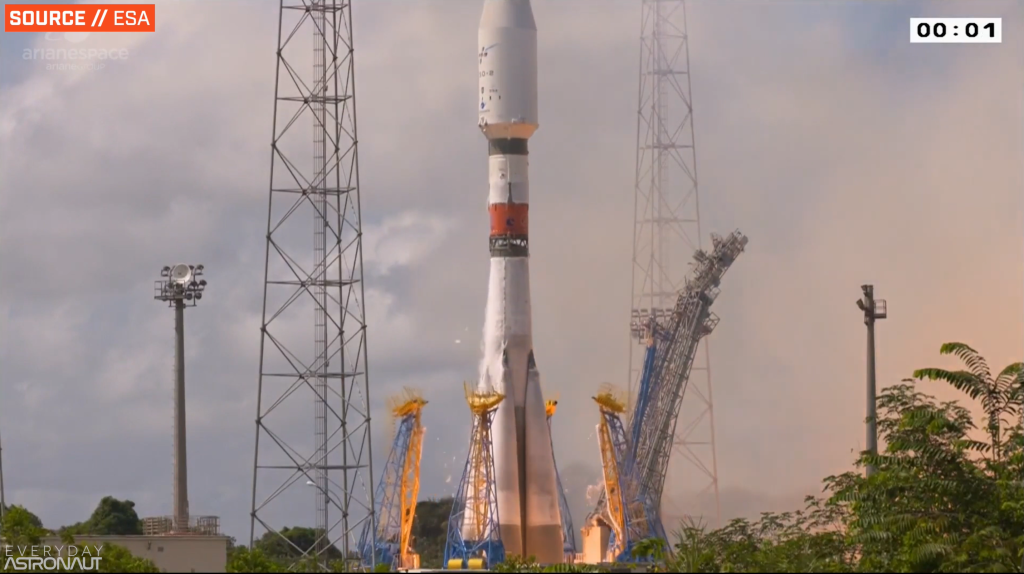
(Credit: ESA)
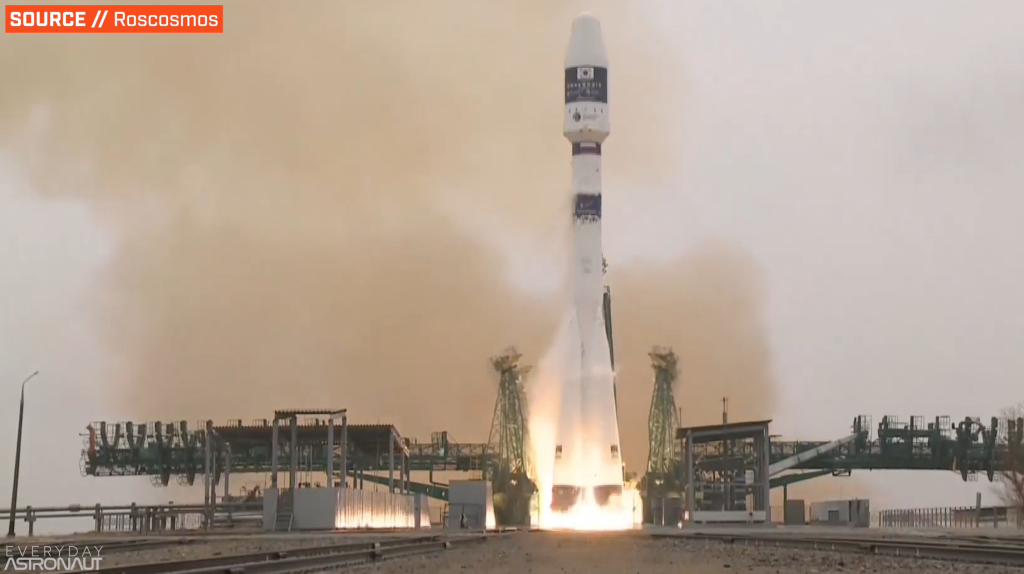
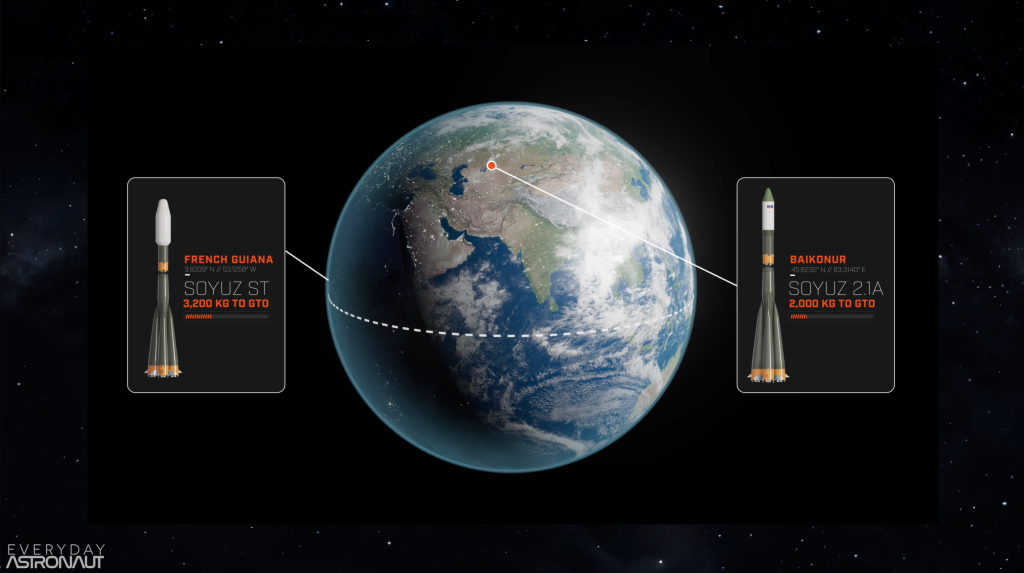
During a launch from French Guiana, the Soyuz ST variant (almost the same as the 2.1) can take about 3,200 kg to a geostationary transfer orbit (GTO). When the Soyuz 2.1A launches from Baikonur, its payload is limited to 2,000 kg towards the same GTO. That is more than 60% more payload capacity, simply by changing existing launch sites.
Sea Launch
ESA is not the only organization that is pursuing “free velocity” from Earth’s rotation. In the not too recent past, a company called Sea Launch had a floating launch platform, from which they could launch rockets at sea, right on the equator. The particular rocket that Sea Launch chose to support was the Zenit-2SL. This is a variant of the Zenit rocket that previously featured in the “entire family of Soviet rocket engines” video, using the RD-171, which is the most powerful liquid-fueled rocket engine ever to be made (so far!).
During its operational lifetime, the Sea Launch platform would travel for around 11 days, covering 4,800 km from Long Beach California to 154 degrees W longitude, which is international waters and about 370 km from Kiritimati (also known as Christmas Island), in Kiribati.
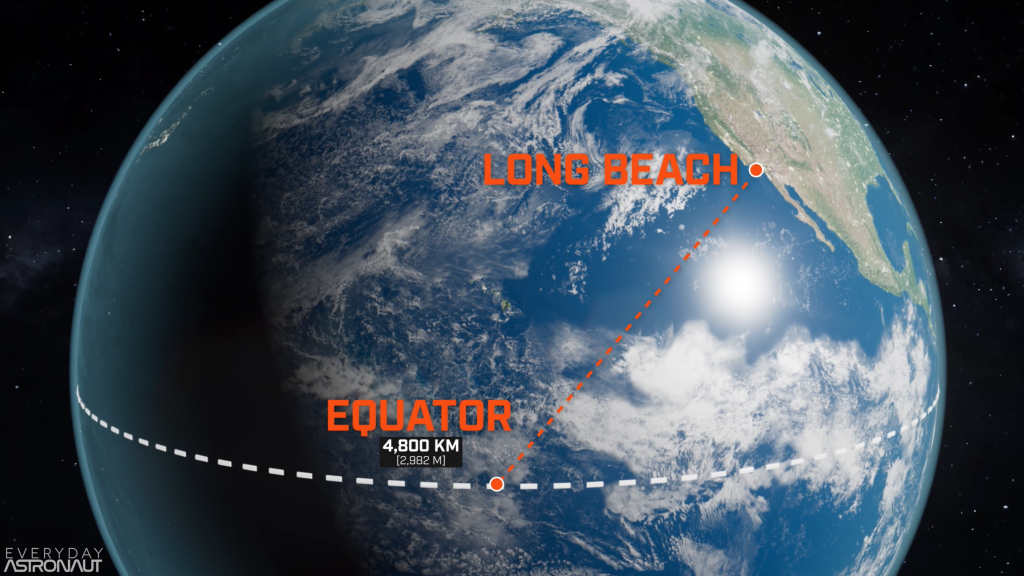
Sea Launch was able to launch a Zenit-3SL rocket 38 times, but its last launch was in 2014. This is not a bad track record, others have done worse. Sea Launch managed to lose only 4 launches out of 38 in total. Unfortunately though, they ceased operations in 2014, as they were seen by customers as unreliable and expensive.
Logistics
Let’s think about this for a moment, though. If they were able to launch 60% more payload using (let’s say) the exact same rocket, why did they not continue to succeed? And if it is so useful, why doesn’t every launch provider transport their rockets to a lower latitude in order to gain better performance?
In the case of Sea Launch, we can see that shipping our rocket to the equator is going to cost money. This cost may be significant, most likely somewhere in the millions of dollars in fuel, fleet and personnel. Almost all launch pads have a reasonable distance between launch teams and local headquarters, but even with such local support, it does become a logistical issue to move personnel around the local site during a launch campaign.

As an example, imagine that you fly from Cape Canaveral (in Florida) to French Guiana, which is remote enough that it can take nearly 24 hours to get there using commercial air services, never mind then traveling onward towards a floating launch platform, either by helicopter or local ship.
Now, not only does this apply to personnel, but also to payloads and replacement parts. It becomes necessary to be able to fly every single item that might be required to these remote locations, on any time that a new problem arises.
If you are a company like ULA, which is already shipping its rocket by barge as discussed earlier in this article, moving a vehicle from Huntsville, Alabama to Cape Canaveral, Florida is already a 3,400 km journey, and the journey using the Panama Canal to get to Vandenberg Air Force Base in California is 8,000 km.
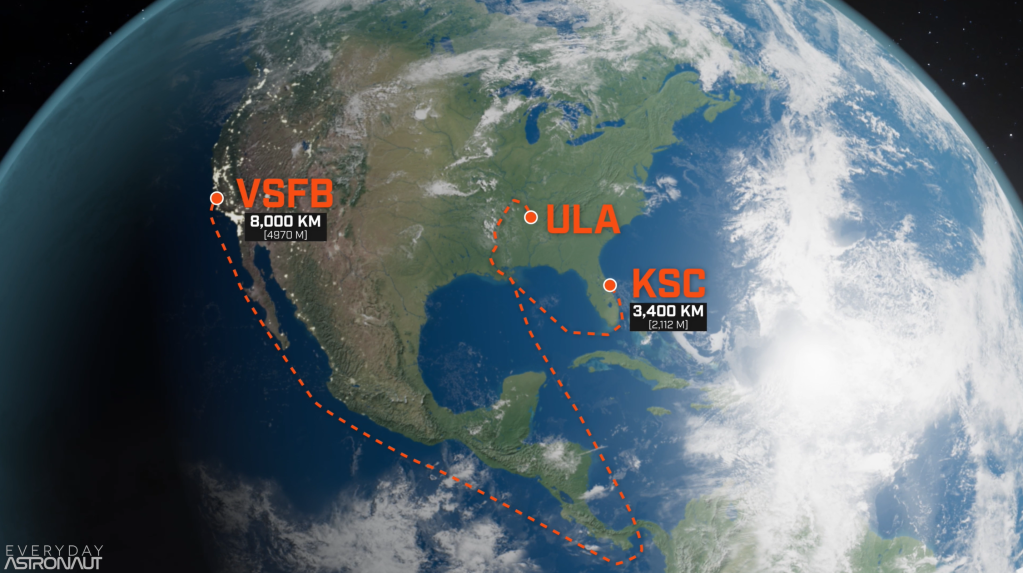
Latitude and type of orbit
We can imagine a scenario in which it might be worth ULA to send its rocket via water to a launch complex that is closer to the equator than some other launch sites that can be reached by land.
The reality is that flying from the equator does probably make the biggest difference. This is true if your other options are land-locked towards the East, such as continental Europe. Or, if your launch pads are very far north, such as is the case with launch pads in Russia and effectively Kazakhstan.
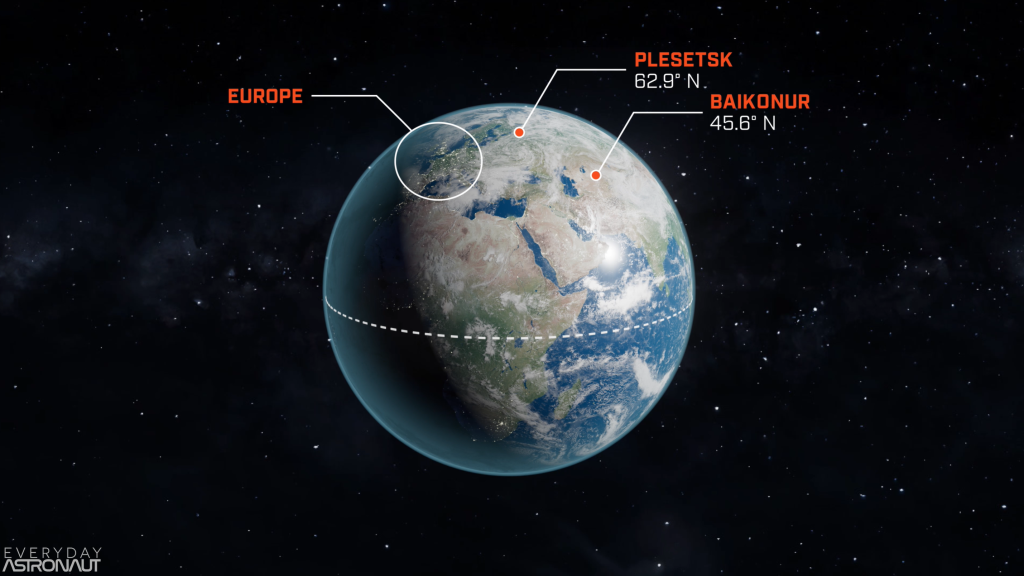
Within the USA, the primary launch sites are all fairly far South, with the majority taking place from 28.5 degrees North at KSC. Wallops (Mars) in Virginia has fewer launches per year, and is at 38 degrees North. SpaceX’ Starbase site at Boca Chica, Texas is at 26 degrees North.
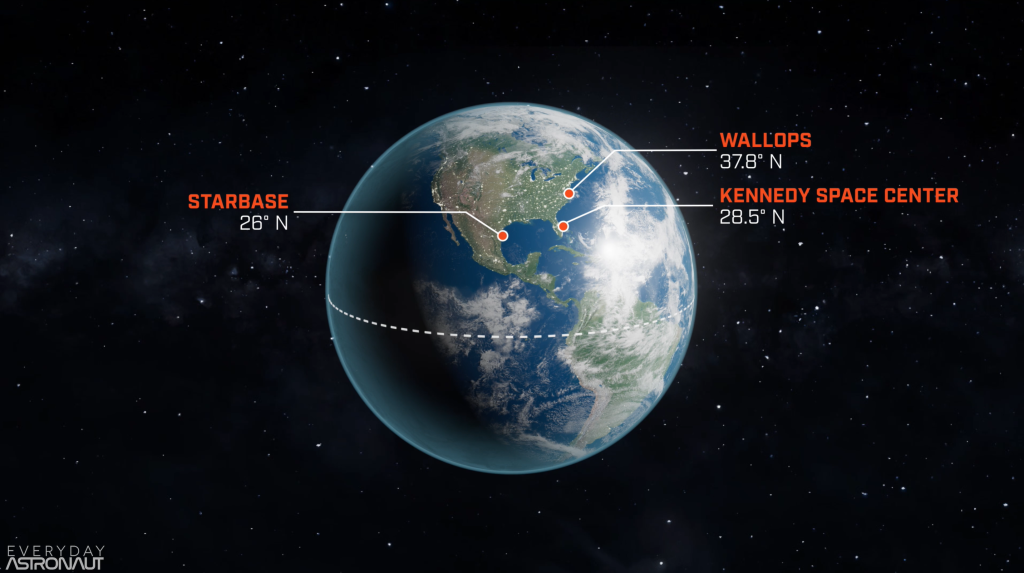
This extra momentum provided by the Earth’s rotation has its effect mostly noticeable if we are launching towards a high energy orbit. Such orbits include Geostationary orbit, or a rare equivalent equatorial orbit. This last case involves either launching from the equator, or else performing at least one energy-intensive “dogleg” maneuver during launch/flight.
If the payload is heading for a polar, retrograde or a Sun-synchronous orbit, then it’s useful to be close to one of Earth’s poles. This removes the need to cancel velocity provided by the Earth’s rotation.
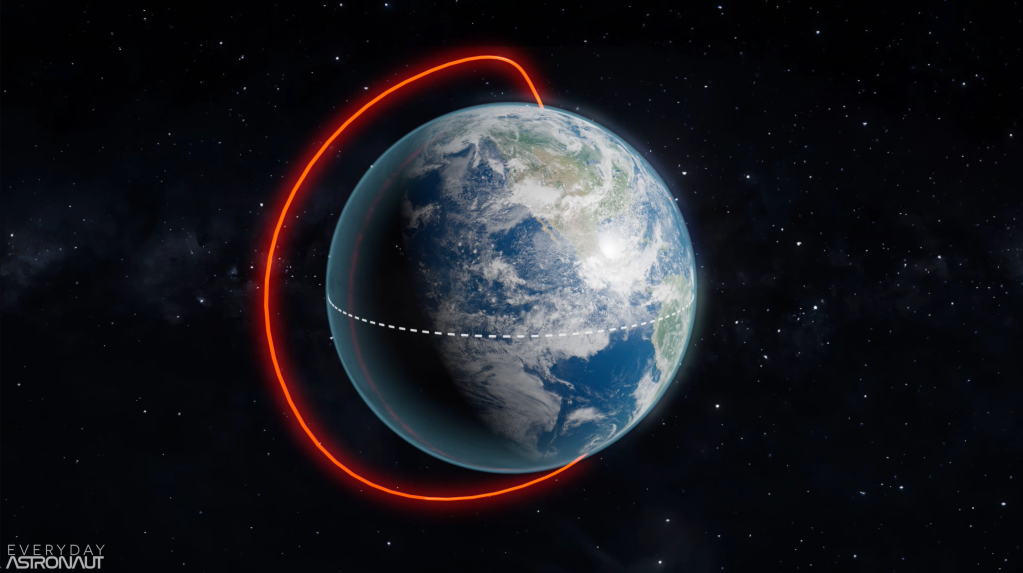
This does mean that, depending on what type of orbit you want to reach, having a launch pad at the equator might hurt your mission more than help it. Ultimately, you need to know how many launches of what type you expect. This will help decide what kind of launch pad is best for you. This is ultimately the art of compromise.
Locations for launch sites
Another thing to consider, which we have not discussed until now, is the location of launch pads. This will be primarily a matter of what land is available to the launch provider. It is not always feasible to place a new launch pad at the exact desired location, for political reasons. In the USA, launch pads are often on military bases or other federal land. It’s true that companies are developing a number of private launch pads in recent years. However, a new launch provider may have to take what is available or on offer.
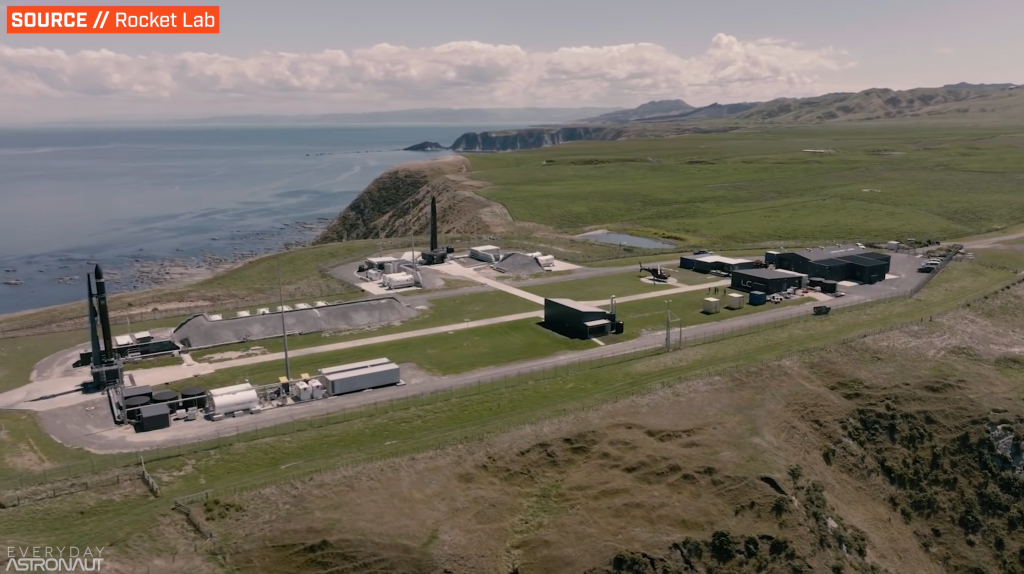
If you are able to support 2 launch pads, one for equatorial, LEO and GEO missions, and another one for polar, SSO, and retrograde orbits, then you are in an ideal position technically. However, now your costs and logistical issue have grown substantially.
Summary
Hopefully, you already know that rockets that can achieve orbit and deliver payloads are incredible feats of engineering, and they are close to the edge of what is physically possible in terms of performance.
However, a “real life” problem that occurs is the practicality and compromise between what we would like to achieve, and what is sensible to aim for, considering all factors. On paper, maybe everything discussed here indicates that we could manage to get most rockets to do more work and increase their performance dramatically.
However, there is a deep trade that lies behind decisions already taken. If we expect option A to cost around $1 billion before it’s possible to start flying customer payloads, and option B represents $2 billion, then it may not be worth taking this gamble.
Any time that we hear a question that could be re-phrased to start with “Why don’t they just…”, Tim will check a few things. Firstly, why does each team of engineers who deal with such an issue tend to end up using similar techniques and solutions for orbital rockets.
Suppose you are building a launch site. After reading this article, would you still want to find a tall mountain that is near the equator and close to an ocean? Or would you settle for what is available and commercially viable already?

In part 2 of this limited series, we will consider launching from airborne platforms, applying jet engines to rockets, and giving rockets a ground-based “injection” of energy, such as slingshot or magnetic levitation techniques. The topic of “Why Don’t They Just…?” could become a category of its own on this channel!





Sea Launch had the right idea. SpaceX should look at this. Launch, and land in the ocean. Far cheaper.
SpaceX did look into this, they actually bought two oil rigs (or similar type of marine platform) but then concluded that it was not worth pursuing their use – for whatever reason.
Magnitude matters as much as sign.
Because of vector addition it only takes about 15m/s of extra delta V to reach a polar orbit launching from the equator than launching from the pole. This is so small you probably have to calculate other effects to be sure which is better.
For orbital mechanics to favor a compromise with a higher latitude launch site you’d need to be doing almost exclusively polar orbits.
For some of the new launch sites currently being built, such as the two in the UK (where I am based), yes, they are looking at polar orbits exclusively.
Something that we didn’t mention in the article, because it wasn’t covered in the video on which it’s based, is the added attraction of higher latitude launch sites due to less disruption for shipping and aircraft. I think for example there is a marked difference between the Wallops launch site in Virginia when compared with KSC in Florida, just on that basis.
The video and article didn’t really explain how the additional payload for the mountain launch was calculated. The benefit will be larger if your mission requirements are closer to the limits of what chemical rockets can do (like ISS crew rotations with ample safety margins) and less if you are trying to do something relatively easy (like launching cheap satellites with their own thrusters to a minimal LEO orbit). Plus, landing the booster downrange on a pad would be more affordable and less subject to weather-related scrubs than landing downrange on a drone ship.
WHY DONT THEY LAUNCH FROM ANYWHERE EXCEPT WHERE WE HAVE TO LISTEN TO EXTREMELY LOUD NOISE AND VIBRATION LEVELS?!
You all are making billions of $ and what we get is deafening noise. You definitely have the “follow the shiny object” strategy wrapped up with getting public support.
Are there specific space agencies or countries that prefer launching rockets from mountainous areas, and what are their reasons for doing so?